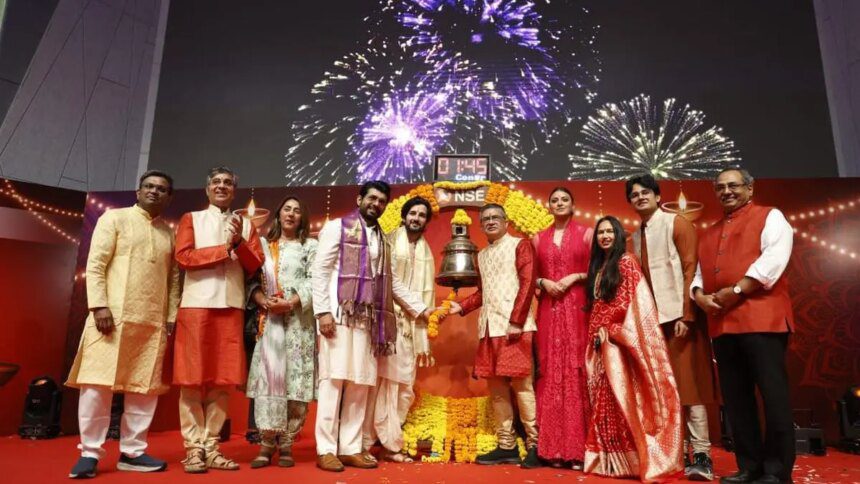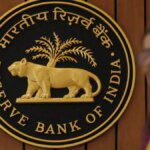Markets concluded almost unchanged during the special one-hour Muhurat trading session on Tuesday, heralding the beginning of Samvat 2082. This subdued performance comes amid cautious optimism from experts regarding a possible rebound after a difficult year, during which India fell short compared to global counterparts.
The Nifty 50 index rose by 25.45 points, or 0.10%, to close at 25,868.60. Meanwhile, the BSE Sensex increased by 62.97 points, or 0.07%, settling at 84,426.34. The muted activity occurred despite festive enthusiasm, with 3,023 stocks advancing compared to 954 decliners on the BSE and 174 stocks achieving 52-week highs.
“Muhurat Trading is an opportunity to reflect on the values that guide our financial journey, such as trust, knowledge, and discipline. Investing is not merely about creating wealth but also about engaging in India’s exceptional economic growth narrative,” stated Ashishkumar Chauhan, Managing Director and CEO of the NSE.
Among the constituents of Nifty 50, pharmaceutical giant Cipla led the gainers, climbing 1.58% to close at ₹1,665.00. Bajaj Finserv followed, increasing 1.18% to ₹2,165.00. Infosys was up 0.69% at ₹1,471.00, while JSW Steel gained 0.68% to ₹1,153.00. Grasim advanced by 0.67% to ₹2,873.00.
Conversely, Kotak Mahindra Bank topped the losers’ list, down 0.98% to ₹2,192.00. ICICI Bank fell 0.65% to ₹1,381.30, Asian Paints dropped 0.64% to ₹2,500.00, UltraTech Cement slid 0.61% to ₹12,271.00, and HCL Technologies declined by 0.60% to ₹1,486.50.
The broader sectoral indices reflected a similar trend, with Nifty Next 50 increasing by 0.10%, Nifty Financial Services gaining 0.11%, while Nifty Bank edged lower by 0.04% to 58,007.20. Nifty Midcap 100 rose 0.11%, although Nifty SmallCap outperformed with a gain of 0.52%, reaching 18,300.65.
Market analysts highlighted that Samvat 2081 was characterized by notable underperformance, mainly due to a significant slowdown in earnings growth. “A key takeaway from Samvat 2081 is India’s considerable underperformance, primarily attributed to a sharp decline in earnings growth from an average of 24% during the previous three years to just 5% in FY25,” remarked Dr. VK Vijayakumar, Chief Investment Strategist at Geojit Investments Limited.
Nevertheless, experts believe the worst may be behind us. “We may have reached the peak of pessimism and negative sentiment regarding India. For Samvat 2082, we are at reasonable valuations at the headline level, with several sectors having actually experienced significant growth over the past year,” noted Dr. Vikas Gupta, CEO and Chief Investment Strategist at OmniScience Capital.
Ponmudi R, CEO of Enrich Money, emphasized that the technical structure remains bullish, indicating that as long as the Nifty 50 maintains above 25,800, with 25,750 as immediate support, the outlook remains positive. A decisive move beyond 26,000-26,300 could lead to new all-time highs.
Vikram Kasat, Head of Advisory at PL Capital, observed that the market opened positively, bolstered by favorable global cues. “Participants primarily focused on large-cap stocks, with selective buying seen in banking, IT, and automotive sectors. However, some profit-taking in metals and FMCG stocks limited overall gains,” he added.
Looking ahead, Vinit Bolinjkar, Head of Research at Ventura, envisions substantial upside potential, projecting a target of 27,600 for the Nifty in the upcoming Samvat and expecting the Sensex to reach 90,100 during the same period. He attributes this potential to a domestic consumption-driven earnings revival starting from Q3FY26 and the possibility of a US-India trade agreement serving as key catalysts.
Dr. Vijayakumar concluded by stating that if earnings growth improves to 8-10% in FY26, with an acceleration to around 15% in FY27, “the market is likely to rally in Samvat 2082, compensating for the underperformance experienced during Samvat 2081.”










